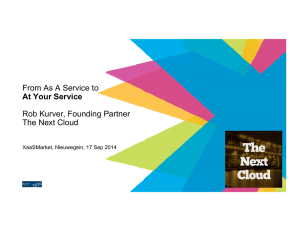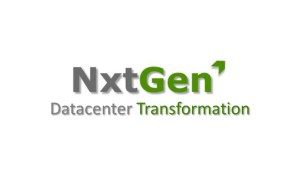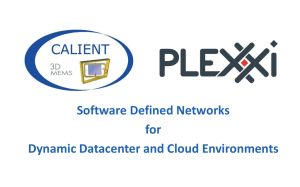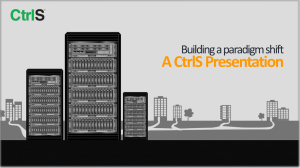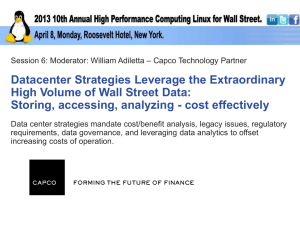Cloud Computing Economics
advertisement
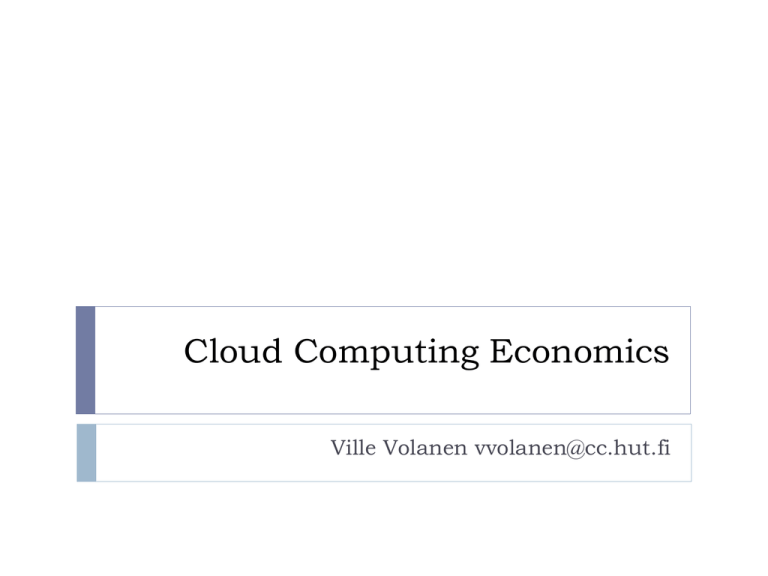
Cloud Computing Economics Ville Volanen vvolanen@cc.hut.fi Packaged Software There are several fixed costs OpEx CapEx Scaling is problematic Licence Hardware Datacenter Maintanance staff Scaling up can be expensive and require of expertice and time if you need to invest to hardware Scaling down might not save much as fixed costs stay the same Difficult to estimate costs High barrier of entry Cloud Service provider builds and maintains the capacity Customer pays what s/he uses Scaling is simple Hardware Datacenter Maintanance staff OpEx Costs of customer depend on usage No investment to hardware required Service provider has less need for scaling (average usage) Costs are easy to estimate Low barrier of entry Datacenter, traditional way Build datacenter componen by component Each component needs to be handled separately Ordering and shipping Unpacking, racking, installing Maintanance is continuous Lots of skilled labour is needed Increasing capacity increases costs More ordering, shipping, unpacking, maintanance etc New workforce needed Datacenter, better option Build datacenter module by module Modules need only electricity, network connection and cooling water Each module with 1000 (or so) systems No unpacking or installing Shipped once (instead of thousand times) and dropped to place Modules are not serviced during their life span Due to high number of systems in module broken hardware has only a small impact of module performance Aged modules are shipped back to manufacturer and recycled Datacenter, better option, cont Adding capacity has only minimal effect to costs (as long as there is room) Module assembly can be automated No service, installations, etc. Economies of scale drop costs Again, economies of scale drop costs Some extra challenges if the modules need to store information Broken disks are not replaced since there is no service For example networking does not have this problem Is cloud always a good option? Would it be economical to buy a couple of virtual servers for every day use from cloud? But also virtual servers need maintanance (install and update apllications, performance monitoring etc). Initial costs would be lower but is that relevant? Cost per server could be around €1000 Cost per technician could be around €50.000 each year Acquiring a relatively small number of servers from cloud is not necessarily very economical Applications ”blocks” For example services provided by Amazon and Google for system development Simple databases http://labs.google.com/papers/bigtable.html Data storage http://aws.amazon.com/s3/ … Developing similar capabilities from scrath would cost huge amounts of money (datacenter costs plus software development) Allows faster time to market as some blocks are already there. Also development can be done in production-like enviroment. Internal services as cloud Typically cloud computing is seen as a service for external customers Company internal clouds are possible as well. IT department is seen more like an internal service provider This increases control to resources and adds accountability Direct cost savings smaller compared to external clouds due to smaller number of ”customers” Economies of scale Conclusions Cloud computing can potentially create huge savings Cost profile is different between cloud and traditional computing Calculations from analysts suggest savings up to 80% in business applications are possible CapEx to OpEx Cloud computing is not always cheaper In addition to dropped unit costs cloud can reduce barrier of entry and time to market Thank you Kiitos References Architecture for Modular Data Centers http://arxiv.org/ftp/cs/papers/0612/0612110.pdf The Benefits of Virtualization and Cloud Computing (http://virtualization.sys-con.com/node/870217 ) Cloud computing economics (http://www.cloudcomputingeconomics.com/) http://en.wikipedia.org/wiki/Cloud_computing



